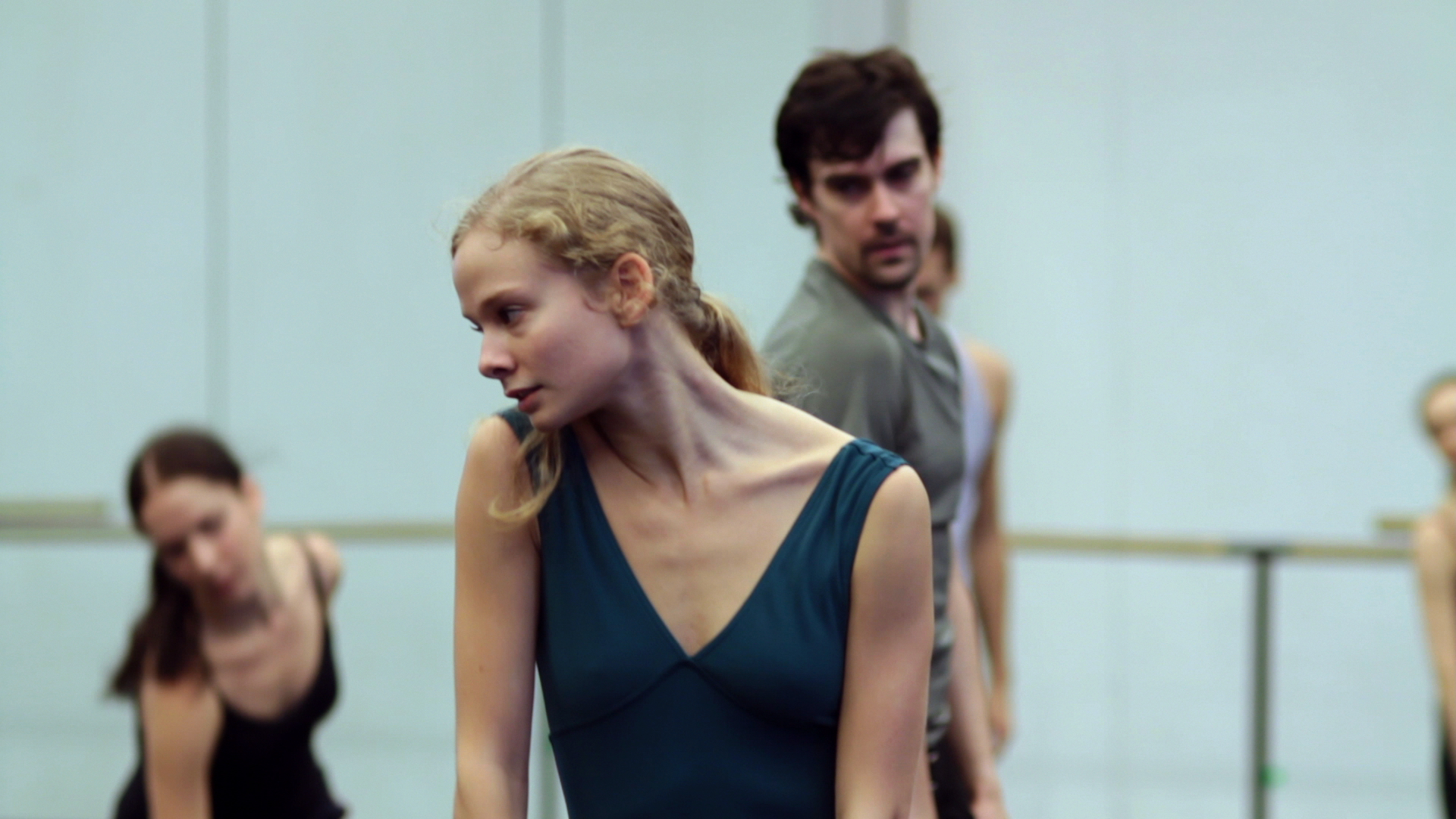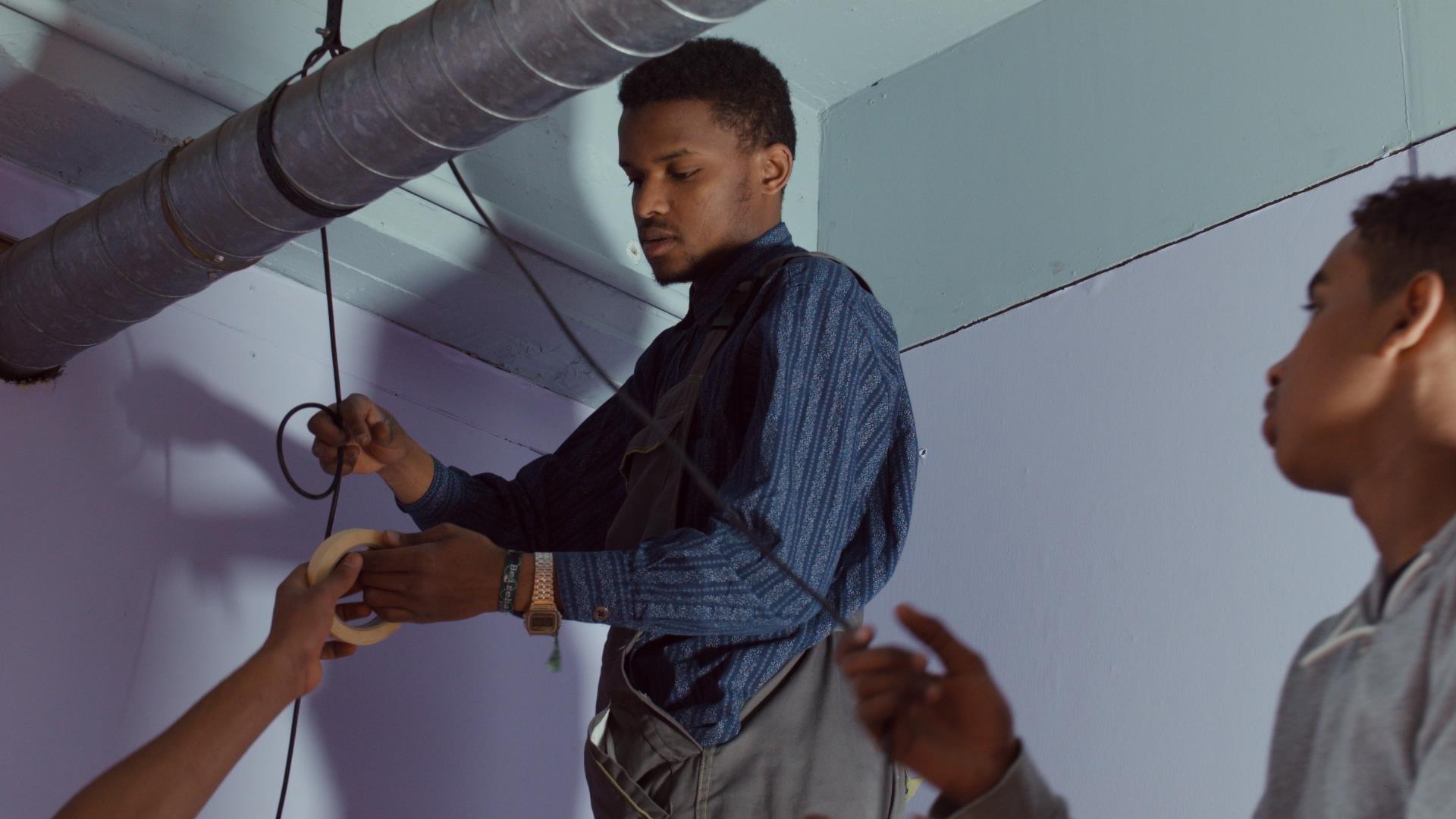On 25th May 2011 the world-renowned Ballet de l’Opéra national de Paris presented Rain, its first ever performance of a choreography by Anne Teresa De Keersmaeker. The filmmakers Olivia Rochette and Gerard-Jan Claes followed the rehearsal process from the auditions to the opening performance. The documentary focuses on how De Keersmaeker and the Rosas dancers convey the dance idiom of the choreographer to the classically trained ballet dancers. The rigidity of ballet gives way to another kind of severity, namely the mathematical pattern of Rain, which, however, conceals a powerful emotional layering. A poetic documentary about searching, looking and hesitating within the walls of the opera, which at times can be claustrophobic.
“Directing/cinematography/editing duo Olivia Rochette and Gerard Jan-Claes have used the ballet rehearsals as a skeleton for their own creative endeavor. Although Rain is about a dance performance, the actual experience of watching the movie is that of gradually becoming acquainted with a place (The Ballet de l'Opéra National de Paris) and the rhythm of the creative process.”
Dylan Sharp
“Rain is a beautiful behind-the-scenes documentary that, both stylistically and in content, embodies the dance world of Anne Teresa De Keersmaeker.”
Sarah Vankersschaeve
“The film is structured as an experience, like a choreography in which we play with movement, spaces, counterpoints, and recurring elements in both sound and imagery.”
Cinevox
“Solicited by the Paris Opera, Anne Teresa De Keersmaeker agrees to put on a new production of Rain (2001) involving contemporary dance movements that at first seem alien to the illustrious French ballet company. The filmmakers were already familiar with the work of this choreographer, who had previously commissioned recordings from them, and they share her sense of rigour and sensuality. In this case, a mix of documentary sobriety and brief incursions into the realm of fiction, as when the camera lingers on the graceful beauty of one of the ballerinas, in defiance of the narrative thread and the Opera company’s rules (filming is all right, but not just one person). The editing thus switches between different types of images: the video of the first production of Rain that the troupe sometimes consults, shots from the Opera’s surveillance cameras, telephone conversations with the choreographer… The film acts as a curtain, like the minimal and undulating fringe of Rain’s Paris stage set. Through the things that are hidden from view, this fragmentary form suggests that beyond the technical learning process there is a more mysterious appropriation. A transmission only visible perhaps in the living present of the performance.”
Charlotte Garson
“In this story of transmission between the dancers of Rosas and the young dancers of the Opéra who take over their roles, all the elements of almost Hitchcockian suspense are present: images reflected or seen through the studio’s glass walls, invisible voices on the phone, mysterious characters in the hallways, glances, discreet whispers, small dramas, and moments of sudden and unexpected communion.”
Jean-Marie Wynants
“In Rain’s final scene, precise movement disbands into pure (e)motion. Under extreme close-ups, particular steps devolve into ripples of movement. Specific patterns swish into undiluted waves. And articulations of the body morph into repeated undulation. This rush transforms into absolute energy, evoking the inner swells of emotion itself—the very highs and lows that seize the young dancer with ecstatic joy when she finally performs upon the stage. Through this fluid vision we ultimately realize that Rain is not a sight to be seen, but a body of water in which to be immersed.”
Christina Campodonico

















